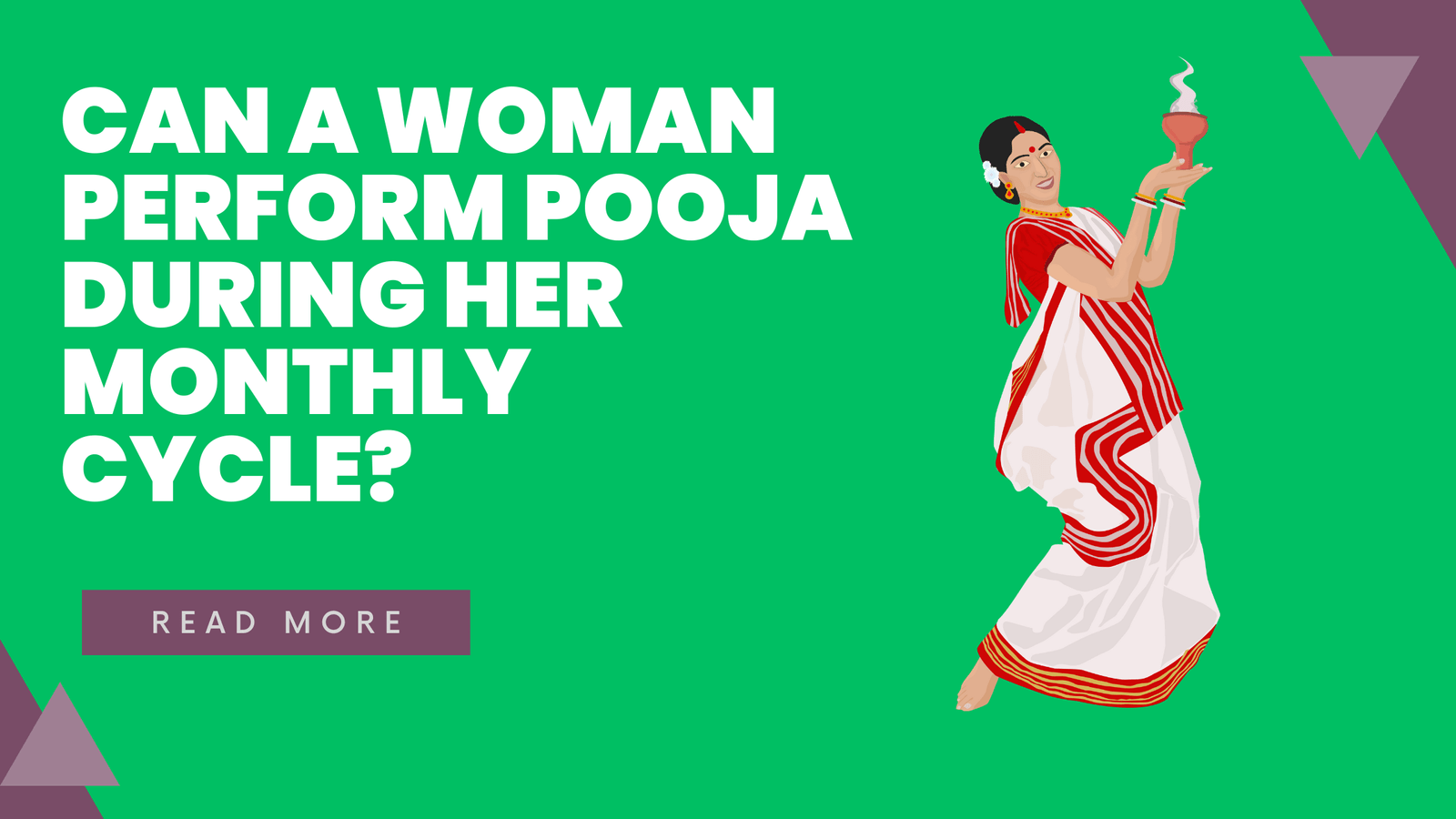One of the most common questions many women and families have when it comes to spiritual rituals and practices is whether a woman can perform pooja during her menstrual cycle. In Hinduism, where rituals are deeply intertwined with religious beliefs, practices can vary across regions, communities, and families. This post explores the reasons behind the tradition of menstruation and pooja, offers insight into the spiritual perspective, and helps modern-day practitioners navigate these traditions in the context of their beliefs.
The Tradition and Cultural Beliefs: In traditional Hindu customs, menstruation has often been regarded as a time when a woman’s body is undergoing purification, and during this phase, certain rituals, including pooja, were sometimes considered inappropriate. This notion comes from ancient cultural and religious beliefs, where menstrual blood was historically seen as impure or unclean.
- Historical Perspective: In ancient times, when there were strict social divisions and codes, menstruating women were often asked to refrain from participating in religious ceremonies, as it was believed that they might “pollute” the sacred space or alter the positive energy of the rituals.
- The Role of Purity and Impurity: Many Hindu rituals, particularly those performed in temples or during special poojas, involve a high degree of ritual purity. The belief was that menstruation, being a natural bodily function, should be respected, but it was seen as a time when a woman was in a state of impurity, and thus, engaging in sacred practices was thought to disrupt the spiritual atmosphere.
Modern Perspectives on Menstruation and Pooja: In contemporary times, these traditional views are being reevaluated, and many people are beginning to question whether the practices based on perceived impurity should still hold relevance today.
- Spiritual and Feminist Movements: Many spiritual leaders and feminist groups argue that menstruation should not be seen as something that limits a woman’s spiritual power. Instead, menstruation can be embraced as part of the natural cycle of life, and women should be encouraged to connect with their spirituality regardless of their menstrual cycle.
- Religious Flexibility: In modern Hinduism, there is a growing belief that pooja and spiritual rituals are more about one’s devotion, purity of heart, and intention rather than physical purity. Many contemporary practices allow women to participate in rituals during their menstrual cycle, as long as they feel spiritually ready and comfortable.
What the Scriptures Say: The question of whether women can perform pooja during menstruation is not explicitly addressed in Hindu scriptures. However, certain texts mention the concept of ritual purity, but they also emphasize the importance of a person’s intentions and devotion.
- Bhagavad Gita: The Bhagavad Gita teaches that devotion to God transcends physical conditions. It emphasizes that what matters most is the sincerity of one’s heart and their dedication to the divine. A woman’s devotion during her menstrual cycle, as with any other time, should be considered valid if her heart is filled with reverence and sincerity.
- Upanishads: The Upanishads focus on spiritual purity and inner consciousness, which are not dependent on bodily conditions. In fact, some believe that menstruation can be a time for deep introspection and connection to one’s inner self, making it a spiritually empowering time for pooja.
When to Perform Pooja During Menstruation: The decision to perform pooja during menstruation ultimately depends on personal beliefs, the family’s customs, and individual comfort. However, many modern-day practitioners of Hinduism believe that if a woman feels spiritually inclined, she can perform pooja during her cycle without restrictions.
- Personal Choice and Comfort: Some women may choose to refrain from rituals if they feel physically uncomfortable or culturally conditioned. Others may feel empowered to perform pooja as a way to honor their body and the divine, embracing their menstrual cycle as a natural and sacred process.
- Alternative Practices: If a woman feels uncomfortable participating in full pooja during her cycle, she can still engage in alternative spiritual practices, such as chanting mantras, meditating, or offering prayers in her mind. These practices can carry spiritual significance and maintain a connection to the divine, even when physical participation in ritual pooja is limited.
Rituals that Can Be Performed During Menstruation: Even if a woman chooses not to perform traditional pooja during her monthly cycle, she can still engage in less formalized spiritual practices:
- Chanting and Praying: Repeating mantras, meditating, or silently praying can still offer deep spiritual benefits.
- Fasting and Offering Light: Offering light through diyas (oil lamps) or lighting incense can be a simple way to honor the divine without the complexity of a full pooja ritual.
- Devotional Music: Listening to devotional songs or bhajans and offering them mentally can connect you to the divine.
Conclusion: In conclusion, the practice of performing pooja during menstruation depends on personal, cultural, and spiritual beliefs. While traditional customs may suggest refraining from rituals during menstruation, modern perspectives are evolving to see menstruation as a natural and sacred phase, rather than a time of impurity. Ultimately, it is up to each woman to decide what feels right for her, based on her spiritual journey, comfort, and understanding of tradition.
Whether performing full pooja or engaging in other forms of devotion, the essence of spirituality lies in one’s connection with the divine, which transcends physical states. Embrace your menstrual cycle as part of the divine rhythm of life, and remember that your spiritual journey is yours to shape, unencumbered by outdated societal beliefs.






